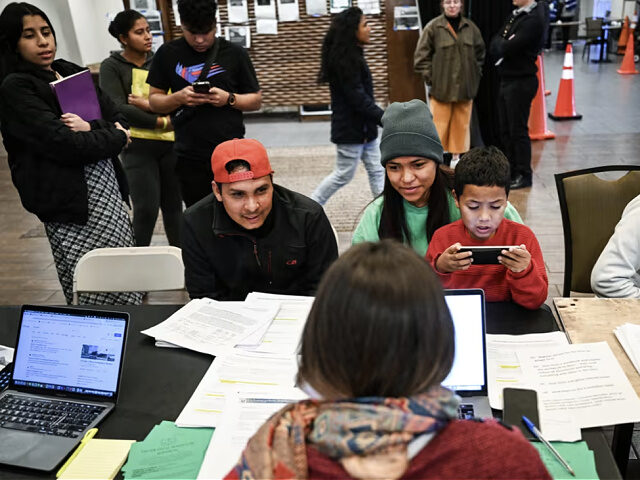Denver Mayor Mike Johnston (D) is celebrating a new initiative to help migrants transition from the city’s shelter system into jobs with a new program to offer job training, legal help, and English language educational services.
Thus far, the city has enrolled about 800 migrants into the program, and more are expected to be added by the end of June, according to NBC News.
“Our goal was to take what people saw as a crisis and turn it into an opportunity,” Denver Mayor Mike Johnston told the media. “We have people arriving in the city who desperately want to work, who have skills and talent and discipline. We have employers in the city who are starving to find employees, and they desperately want to hire them. What we wanted to do was to take those people that are looking to work and connect them to the training and the skills centered on jobs where we have the greatest need. So, what we did is create this first-of-its-kind program in the country, which is this asylum-seeker program.”
The migrants enrolled in the program were in the city’s shelter system and are reportedly applying for asylum, which puts them on a fast track to work permits in six months.
Johnston added that the six-month time period will be used to implement the new program, and migrants will receive English classes, financial literacy training, work training, and legal help with their asylum claims.
“So when that work authorization comes,” Johnston said of the migrants, “you already have the skills, the training, the authorization, the certification to step onto a job on Day One and be a huge asset to a Denver employer.”
By subscribing, you agree to our terms of use & privacy policy. You will receive email marketing messages from Breitbart News Network to the email you provide. You may unsubscribe at any time.
The program will likely put more migrants ahead of citizens in the line for jobs. According to CIS.org, all the growth in employment from 2019 through 2023 went to foreign-born applicants.
The group looked at the labor participation rate starting in 2019 just before the pandemic and found that the percentage of U.S.-born men without a bachelor’s degree (ages 18 to 64) is at 75.6 percent as of 2023. That is still below the 76.3 percent rate from 2019.
But those rates are far below the 80.6 percent rate in 2006 and 82.6 percent seen in 2000. And in the 1960s, nearly 90 percent of this sector of men were in the workforce.
On the other hand, the share of immigrant men without a bachelor’s degree in the labor force is now at 85.5 percent, which is higher than that of citizens.
The group adds, “While the numbers have continually rebounded from the lows of 2020 [during COVID], there were still 183,000 fewer U.S.-born Americans working in the fourth quarter of 2023 than in the fourth quarter of 2019, before Covid. The number of immigrants (legal and illegal) working is up 2.9 million over 2019.”
Follow Warner Todd Huston on Facebook at: facebook.com/Warner.Todd.Huston, or Truth Social @WarnerToddHuston.

COMMENTS
Please let us know if you're having issues with commenting.